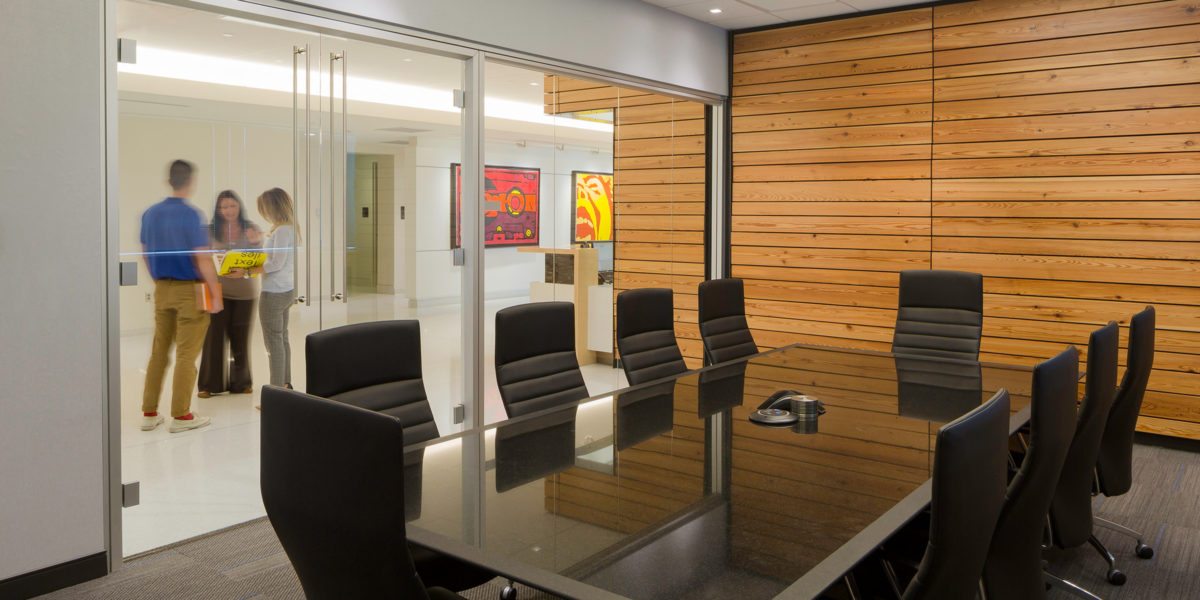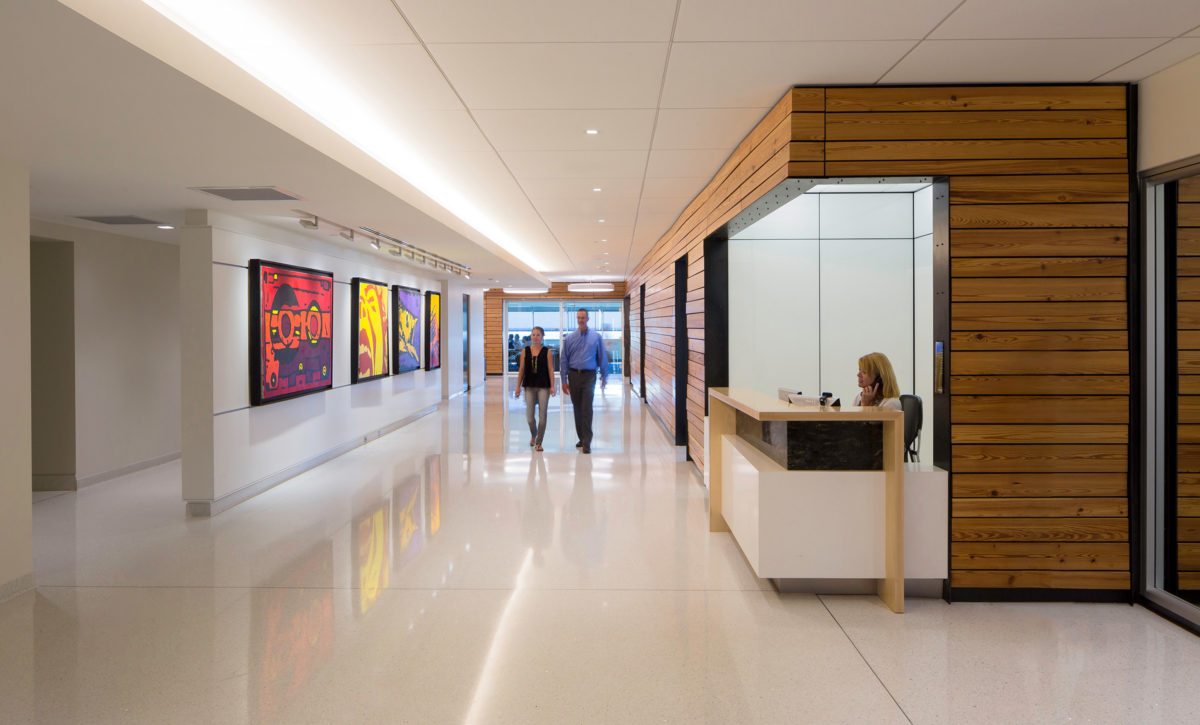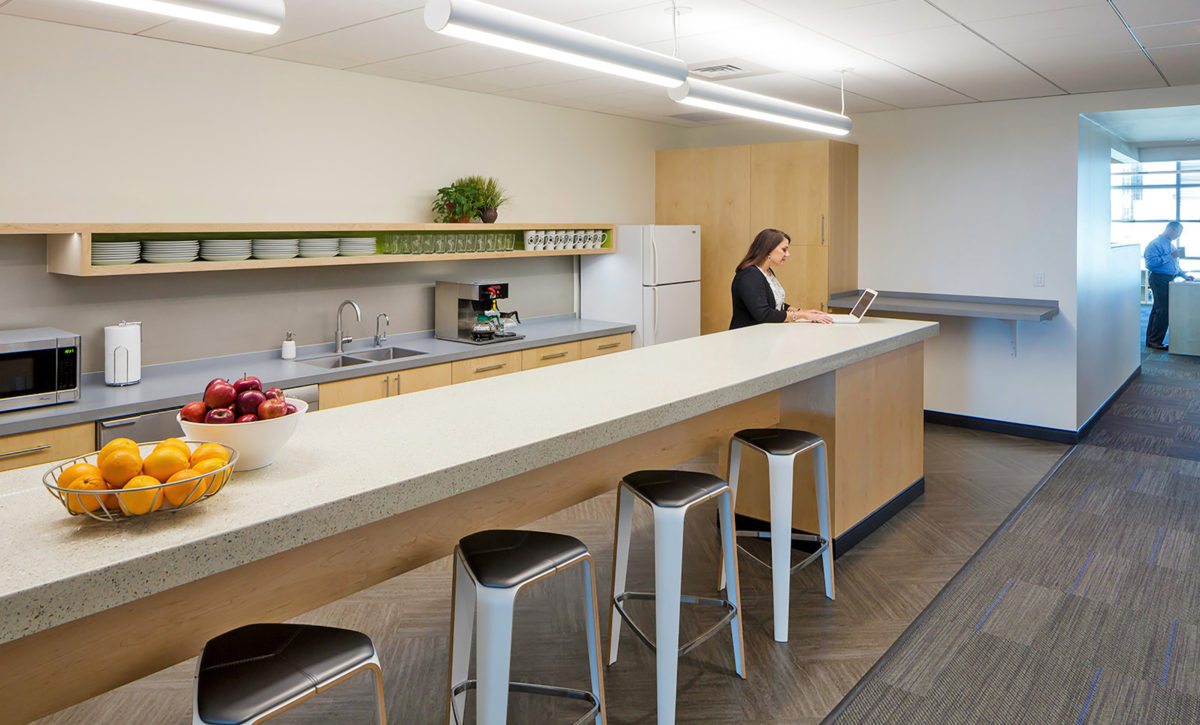Design Perspectives on Sustainability in Corporate Interiors

As designers of the built environment, we aspire to a process where sustainability is integrated as a given – simply part of our design DNA. We’re getting there – sustainable design today is an expectation rather than an exception – but in the meantime, having standards such as LEED (Leadership in Energy and Environmental Design) to guide us is key. While other frameworks are emerging at the state and national levels, LEED remains the predominant measure to validate building performance and support the process of sustainable design decisionmaking. In fact, the USGBC (United States Green Building Council) estimates that 1.85 million square feet of space is being certified daily.
With businesses and owners increasingly recognizing both the tangible and intangible benefits of sustainable design – brand reputation, operational cost savings, and workforce well-being, to name just a few – the term “sustainability” is now being redefined to encompass much more than building performance. Sustainability and wellness for our human capital as well as the physical environment are becoming a priority.
With people spending the vast majority of their time indoors, interior designers have a unique opportunity to impact the health and productivity of our population in addition to the sustainability of our facilities. Daylighting, colors, materials, and space planning impact our mental health and the way we experience and function in our workplaces, while choices such as the use of low or no VOC materials protect our physical wellbeing. Additionally, interior designers are frequently responsible for specifying the products we interact with every day – meaning that the choices they make to include sustainable, non-toxic products can have a tremendous positive impact on both our natural resources and human health.

In designing our own office space in the new 4525 Main Street Tower, the Clark Nexsen interiors team led with enthusiasm – not only selecting sustainable features, but also developing the moving plan for more than 200 team members, which took place over just one weekend. Certified LEED Gold for Commercial Interiors, the space was designed to optimize the health and well-being aspect of the interior environment and actively promote the collaborative, ideas-based design approach that is at the core of our culture.
In pursuing LEED certification, some of the most noteworthy sustainable choices included extensive glazing to capitalize on daylighting, with opaque elements such as walls located at the building core; the relocation and reuse of existing casework, office furniture, seating, and storage items – minimizing waste headed to a landfill; a stunning, reclaimed wood feature wall in the lobby; recycled glass countertops; low or no VOC paint, adhesive, and finish materials; LED fixtures; and the selection of products with a long life cycle such as the terrazzo lobby flooring. Each element was thoughtfully chosen for both its aesthetic and sustainable benefits, and is representative of our commitment to social responsibility across our company and our planet.

When working with clients, establishing a trust-based partnership is critical to successfully designing a sustainable facility, and is particularly important when pursuing LEED certification. Highlighting the benefits of life cycle cost savings and healthier workplace environments that spur productivity, interior designers work with their clients to select the appropriate level of certification. With LEED as a guideline, the thoughtful and strategic implementation of sustainable features simply makes good business sense, with LEED certified buildings consuming 25 percent less energy, 11 percent less water, and diverting more than 80 million tons of waste from landfills (per the USGBC).
As our industry continues to develop innovative solutions to preserve our natural resources, interior designers have a dual honor and responsibility to advance the understanding and implementation of designs that sustain our workforce and our world.
Originally published in The Voice of Hampton Roads' Commercial Real Estate Summer 2016 issue.